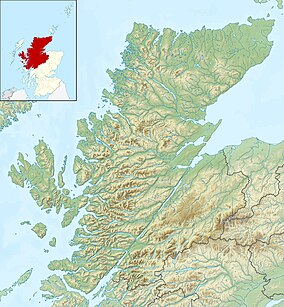| Glenmore National Nature Reserve | |
|---|---|
IUCN category IV (habitat/species management area) [1] | |
 Glenmore Forest | |
| Location | Highland, Scotland |
| Coordinates | 57°10′12″N3°42′58″W / 57.170°N 3.716°W |
| Area | 21.1 km2 (8.1 sq mi) [2] |
| Designation | NatureScot |
| Established | 2007 [3] |
| Owner | Forestry and Land Scotland |
| Website | Glenmore Forest Park |
Glenmore Forest Park is a remnant of the Caledonian Forest near Aviemore in the Badenoch and Strathspey district of Highland, Scotland. Owned and managed by Forestry and Land Scotland, it lies within the Cairngorms National Park, and is one of six forest parks in the country. [4] The forest park, which was established in 1948, [5] covers 35.7 km2, [6] of which 21.1 km2 is designated as a national nature reserve (NNR). [2] Glenmore surrounds Loch Morlich, and is below the rise of the Cairngorms to the south; to the north the park extends to the summit of Meall a' Bhuachaille. The forest forms part of an expanse of Caledonian Forest that stretches from Glen Feshie to Abernethy, and which as a whole forms the largest single area of this habitat remaining in Scotland. [7] It is home to much wildlife including Scottish crossbills, crested tits, capercaillie, narrow-headed ants, red squirrels and red deer. [8] [9]
Contents
The Sportscotland National Centre Glenmore Lodge is situated about 1.5 km east of Loch Morlich, and is surrounded by the park. [10] During the Second World War the area was a training base for Norwegian resistance fighters, who are commemorated by a memorial located near to the visitor centre. [11]

